Fortune, we are told, favours the brave. Misfortune the reckless, but fortune the brave.
Thus, summing all the bravery we could muster, we descended into the unknown of the Bunker am Bahngleis and the exhibition Generation Köln.....*
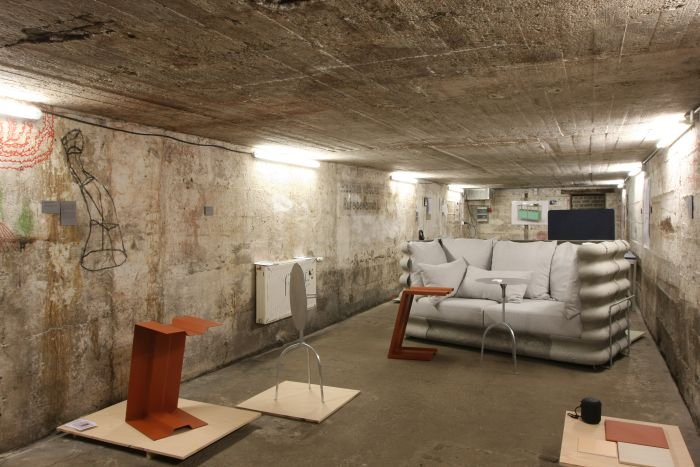
As noted in context of Generation Cologne 2018, we're not huge fans of generic umbrella terms such as "Generation", finding them not only distracting and counter productive, but also limiting, tending as they do towards the definitive.
Not only us, but we're sure neither Karoline Fesser, Klemens Grund, Thomas Schnur or Tim Kerp would consider themselves definitive representatives of contemporary Cologne design. Are however four designers who have been active for plus/minus a decade or so and are now in that stage of their career where they have established a position for themselves, established a firm, when still evolving, relationship to and understanding of deign, and can, hopefully, now develop in directions they want.
In context of Generation Köln 2019 each of the four presents a briefest of brief glimpses as to just what those directions may, possibly, be.
For reasons we can't fully explain, while visiting Generation Köln, we were under the impression it was meant to be a house, and that despite a layout, and a whole host of visual clues, which indicated the contrary; however, and as regular readers will be aware, once we've found an analogy we're loathed to give it up.
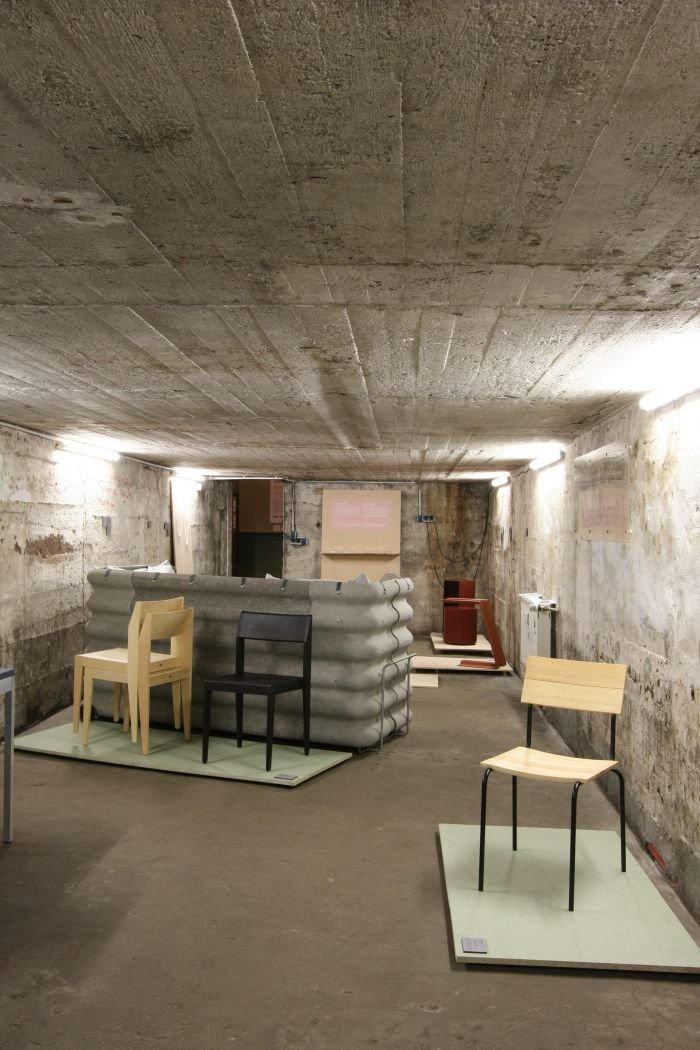
Calm down! Before were accused of anything of which we're not quality, we're not talking here of the Damenzimmer, the Boudoir, of which previous generations were so proud, before realising moving towards gender equality might be a higher goal: the subject of Karoline Fesser's presentation is/was powder, and for all the many differing uses and personalities possessed by otherwise (apparently) similar powders. Something demonstrated by three areas of Karoline's work: ceramic tiles, powder coating and Selective Laser Sintering (SLS); the latter being a technology which, in effect, employs lasers to bind powders, and which Caroline and jewellery design Christina Romowa have used to develop a single piece necklace, an object which formally resembles many a necklace, but which isn't about the appearance, but the possibilities of the production process.
Processes which have reached a much higher degree of, not sophistication, but, sophistication in terms of ceramic tile production, as represented by examples of tiles developed by Karoline with and for Agrob Buchtal and also powder coating, one of the most common forms of surface treatment in furniture design and as represented by Karoline's 2016 Hide side table, produced today by Hem, and a new work Watson. Named after Sherlock Homes reliable sidekick and conceived, and as with the good Doctor, as a mobile "assistant" for home or office, Watson is crafted from one piece of powder coated steel, the folds and troughs not only providing the stability but also creating extra space and thereby extra functionality. And thus Watson not only stands as a dangerously near-post-modern object which toys with understandings of formal reduction, but also as an excellent example of intelligent product design, that which through the production method both saves resources and also adds value to a product.
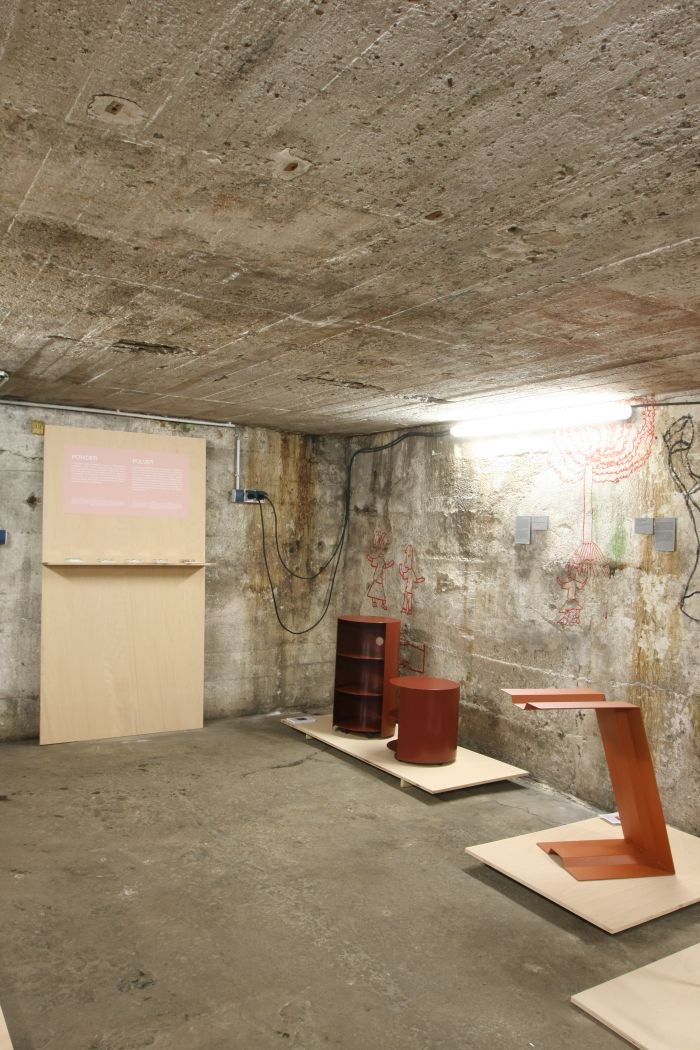
Much as in his 1984 text "The Poet will not Polish" Jasper Morrison notes that "Marcel Breuer seeing a pair of bicycle handle-bars decided to make chairs using the same industrial process. The new world constructor seeing a pair of bicycle handle-bars decides to use them as they are and save himself the trouble and expense of bending the tube."1, so to has Klemens Grund taken off-the-shelf pieces of corrugated Eternit roofing sheets and used them, as found, as the basis for, effectively, a concrete sofa. Not that it is sofa to be confused with the rawness of Morrison's work. Or indeed the Eternit objects realised by Willy Guhl. For whereas Morrison was (more or less) content with simply using the pieces as he found them and Guhl (generally) used raw Eternit, Klemens has augmented the corrugated sheets with a metal base and deep, outdoor, upholstery to create a very welcoming homely, yet unfamiliar sofa, a work which while oozing a warmth, forces you to question your aesthetic understandings in order to be able to fully feel that warmth.
Realised in conjunction with Mohr Polster in context of the Werkraum Bergenzerwald's Handwerk + Form competition, the Eternit sofa reflects Klemens' long reflections on both the connections between architecture and furniture, and also novel uses of existing architectural/craft materials. In itself nothing new, the high sided sofa is absolutely de rigour in the portfolio of any self-respecting furniture manufacture; the Eternit sofa however not only presents a singular interpretation of such, but is, we imagine, arguably be as at home inside or out. And which thanks to the carrying handles can be moved between the two.
In addition Klemens' loft features a flip-top bistro/side table, an established genre and one Klemens has, and a with his D7K Folding Chair for Tecta achieved with deceptively simple mechanism
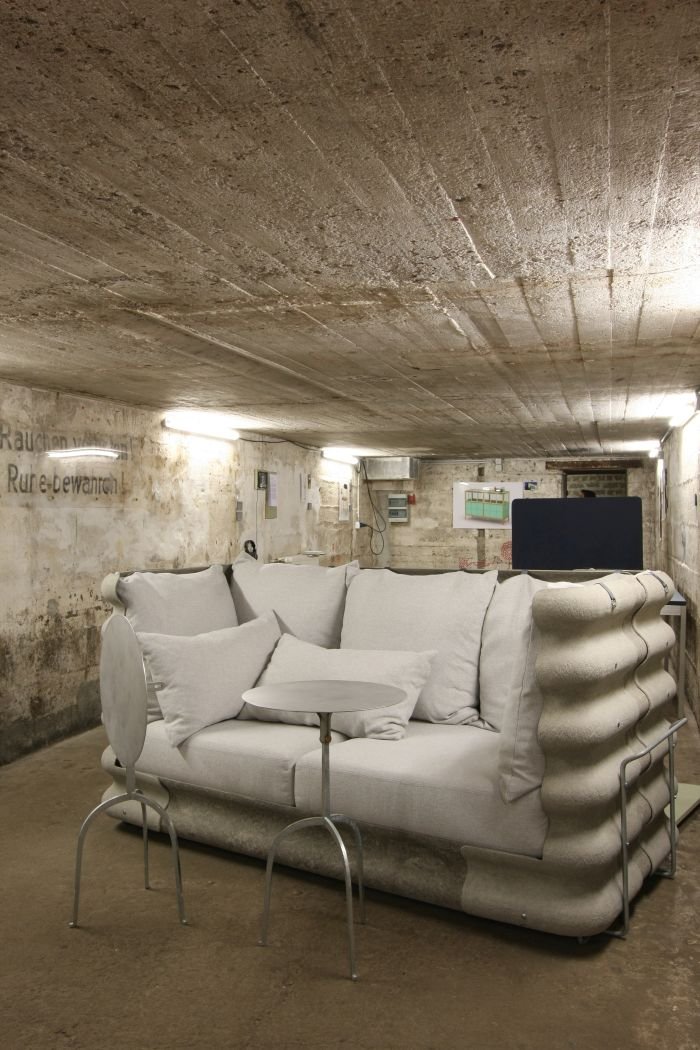
Arguably the Chairman's Room isn't, and never was, a real thing; but chairs in homes are and Thomas Schnur presents not only examples of his chair design work, but reflections by two former assistants on the way he develops such projects: Katarina Dačić having written a short text on the complexity of not only the chair development process, but of the relationship between chair designer and chair user, while Kévin Anthoine-Milhomme has visualised Thomas's work in a (very short) graphic novel: the Chairman dragging his work through an endless forest, only at the end to find himself standing on it in order to gain a glimpse of utopia. Which is poetically very reminiscent of Hans J Wegner and his "If only you could design just one good chair in your life . . . But you simply cannot"2. Or indeed Egon Eiremann who continually strove to make a chair better than his last one, regardless of how good his last one was. Such is the chairmaker's itch. And it sits deep.
Yet it is another career, pathological?, chairmaker we were reminded of viewing the Chairman's Room. In addition to presenting his Nora chair for Jan Kurtz, Thomas also presented a development model from a project being undertaken in conjunction with Neustadt-Duttweiler based Magnus Mewes. In essence Magnus, and Walter Amrhyn, have patented a solid wood forming process, one which, like that of Michael Thonet is a lot more complicated than it sounds, and one which, as with that of Michael Thonet, opens up new possibilities in terms of furniture construction. New possibilities which Thomas is exploring, and new possibilities which are graphically explained in the so-called High-Density chair by the placing of small indentations in the solid wood backrest/seat into which the steel tube frame effortlessly, and very satisfyingly, nestles. And a work we are certain we will come back to real soon.
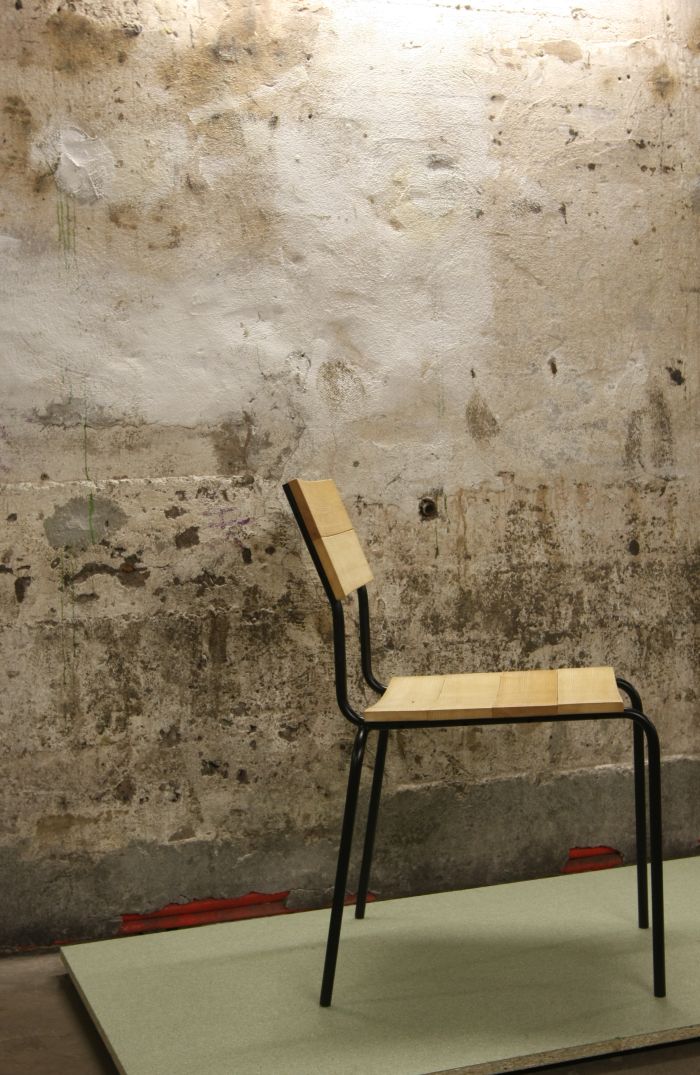
Sorry, no not a bar, but a room occupied by works, which to paraphrase Tim Kerp, are the results of a designer's considerations on the things they see; or put another way, the abstraction of everyday sights in Cologne into objects, including the platform of the city's Colonius communications tower as a lamp, the 4711 building in Ehrenfeld as a vitrine, a vitrine which, yes, came very, very close to setting off our Art Deco alarm, but which on account of its inherent reduction and unassuming politeness, didn't, or the end of a night of Kölsch drinking, the beer mat atop the glass, as a vase.
Again in itself nothing new, the Assemblage de Cologne project is however a really nice example of observational design, and one which not only helps the viewer approach an understanding of how a Tim Kerp sees the world around him/us, but also poses questions concerning the form giving process and for all the validity of the correlation between form and function, or perhaps better put the starting point in considerations of the correlation between form and function. Form? or Function?
And because the contemporary Gerenation Köln is as at home virtually as in a underground-ish bunker, the presentation is not of actual, tangible objects, but via virtual reality.
A presentation format which means can also be viewed online at www.tim-kerp.de/assemblage-de-cologne
As noted Karoline&Klemens&Thomas&Tim in no way represent the definitive contemporary Cologne design, and we in any case understand, hope?, Generation Köln as an ongoing project to which the four will one day be alumni; however Karoline&Klemens&Thomas&Tim represent, or perhaps better put their presented work represent, examples of, not only examples of the type of works currently being undertaken, when not in Cologne directly then certainly by designers with Cologne connection, but also, of different aspects of design, differing aspects of the designers profession and as such helps one better understand not only the four, but design.
All it takes is the bravery to descended into the unknown
Generation Kön can be viewed at Bunker am Bahngleis, Gladbacher Str. 49, 50672 Cologne until Sunday January 20th
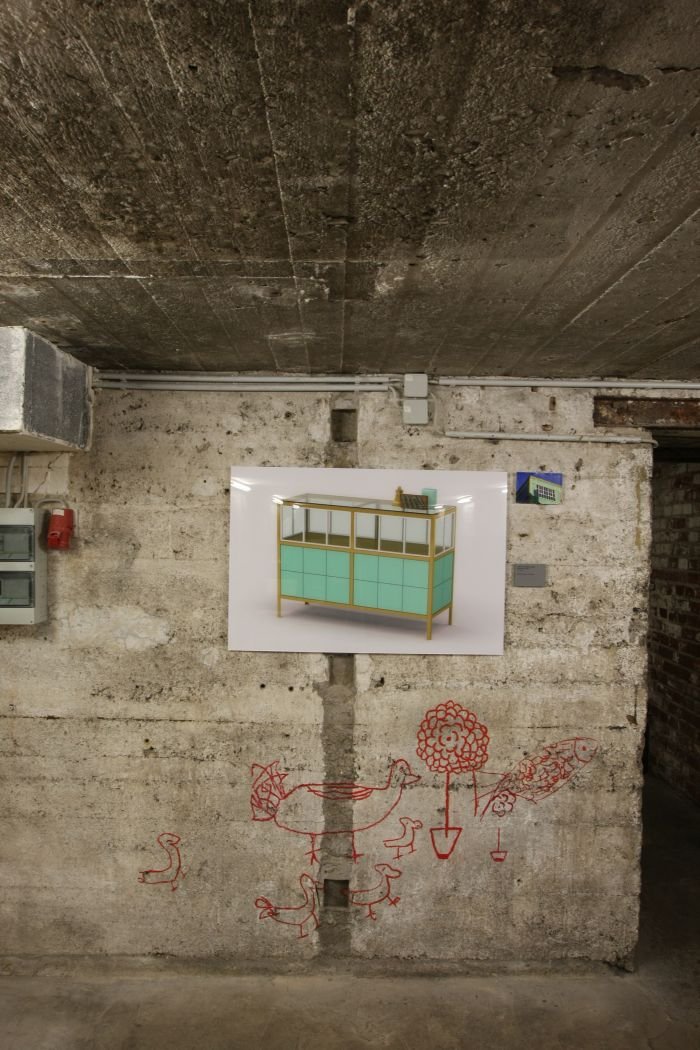
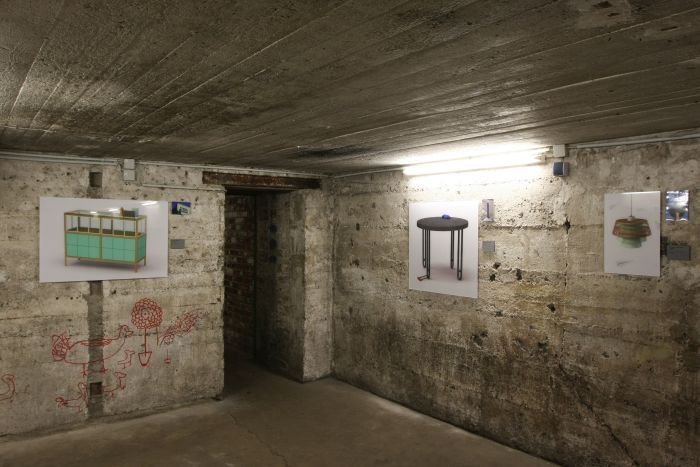
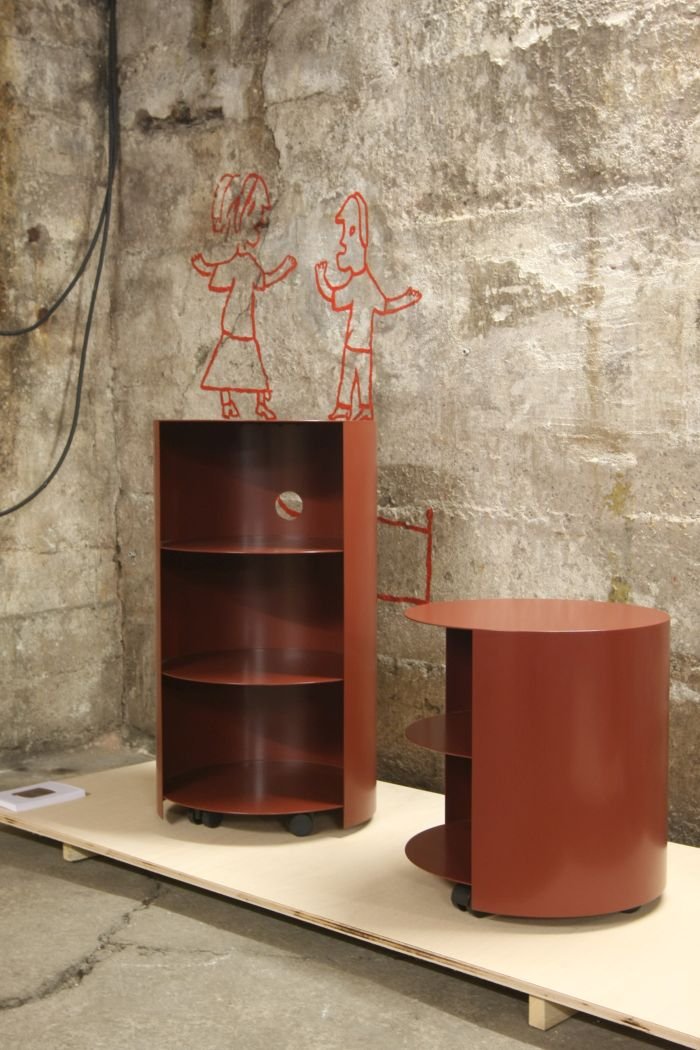
*in the interests of transparency we didn't take that much convincing, we've been familiar with the protagonists work for while now. But in the interests of dramatic effect, let's pretend we weren't/aren't
1Jasper Morrison, The Poet Will Not Polish, Kaufhaus des Ostens, Catalogue, c kdo + verlag zweitschrift, Hannover 1984
2Quoted in Christian Holmsted Olesen, WEGNER – Just one good chair, Hatje Cantz Verlag, Ostfildern, 2014